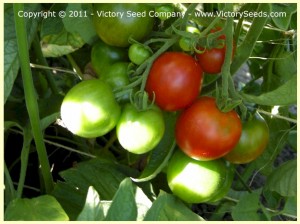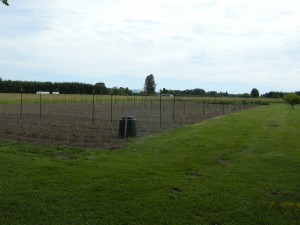For those of us in the Northern Hemisphere of the planet, it is not quite time to get out and start digging and sowing in the garden. On nice days like we had here on the farm this morning, there are always garden related tasks that we can steal away to. This morning we got some of the flower beds around the house cleaned up . . . weeds hoed out of the bark, various leaves, twigs and other debris raked up, etc. But the greenhouses sit empty and the fields fallow.
However, we all know Tempus fugit, and it will not be long before we will be in the full swing of gardening. What does this mean right now? It is time to plan! I have not started to actually lay out our gardens, but I have been figuring out the list of what things I need to be growing out to replenish stock as well as the new varieties that I want to trial.
For the home gardener, this is the perfect time of year to review your gardening notebooks from past years, noting your successes and failures, your favorite varietiess, and getting your seed orders submitted.
I can tell you that as I write this entry, we have no work backlog and are getting orders filled and mailed within a day or two. Those of you that have been supporting our seed variety preservation work with your orders over the years know that we can get busy the closer we get to planting time. This is just a heads up to folks who are in a position to take advantage of the slow time.
And once you do get your list of seeds made and ordered, there is still more planning you can do to be prepared for gardening time.
1) You can start getting your pots cleaned and organized. Most folks skip this step and I admit, I can be lax on this point when time is a factor. But if you are ahead of the game, take the time to put a little chlorine bleach in a five gallon bucket of water and dip each old pot. It is just another precautionary measure to help prevent soil borne diseases.
2) Buy fresh seed starting potting mix. This is actually pretty important. Old potting soil will likely have lost any nutritional value that it might have had. And depending on how and where it has been stored, it could be harboring insects and disease. You want to give your seeds and seedlings the best possible conditions that you can in order to improve your odds of success. A good, organic, sterile, seed starting mix is a good investment.
3) Get your garden journal ready. This is nothing fancy. I use a three ring binder with clear plastic sleeves to store things like seed packets, garden layout drawings, and blank pages for keeping notes about things like weather, the emergence of various pests, when things were sown or planted, first maturity dates, harvest dates, what inputs were applied and overall summaries of how each variety fared. This is great data to review when planning each future garden.
4) Set up your seed starting location. I have a small cabin on the farm that I heat and move a shelving unit into that I attach lights to. If you use a spare bedroom, heated greenhouse or potting shed, etc. , now is the time to get an area cleaned up and ready.
5) Draw up your garden plan! I actually measure out the space and on graph paper, draw my gardens to scale. It takes a bit of time up front, and I have been known to change my mind a bit when we actually set to planting, but I would never head out to a fresh garden space without one.
It would be like a painter starting a painting on a fresh canvas without the first thought or prior sketch of what they were about to paint. Yes, they might end up with something beautiful, but you an bet there would be many revisions and a lot of wasted time and materials.
Plan! Draw the outline of the space. Make a reference to where south is and where the sun will be at the peak of your gardening season. Use your list of seeds to decide where they will best thrive and remember to consider their height and girth at maturity when assigning them their locations. If you are a seed saver, this is also a good time to consider isolation distances.
These are the types of things that we can actually control in our explorations into gardening and food production. Of course, nature always has a few surprises to throw at us over which we have no control, but by planning and working with our knowledge of how nature typically acts in our location, we stand a good chance of achieving some level of gardening success.
And in closing on this subject of garden planning, the following is a news segment from a Eugene, Oregon television station. It offers some tips and we really like the seed choices that the garden writer made ![]()



